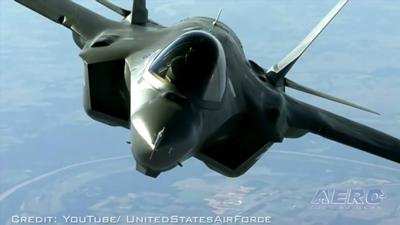Wed, Aug 17, 2022
Faulty Ejection Seats Inspected and Repaired
Lockheed’s F-35 Lightning II is a tour de force of aerospace technology and good-old, American-ish know-how. The F-35 is the first aircraft since Douglas’s mighty F-4 Phantom to be used concomitantly by the United States’ Air Force, Navy, and Marines.

What’s more, the F-35 program—through which the USAF ultimately plans to provision itself with 3,300 of the stealthy, fifth-generation, multi-role warplanes—is the most expensive military undertaking in the history of the world.
All told—and adjusted for 78-years of regular inflation and two-years of high-octane, Biden inflation—the F-35 program stands to cost contemporary Americans a little more than one-quarter of what it cost their forebears to wage the whole of the Second World War.
Yet for all their magnificent technology and breathtaking cost, the majority of the U.S. military’s Lightning IIs were grounded for nearly three-weeks when a defect was discovered in a critical component of the British-built, Martin-Baker US16T ejection seats by which F-35 pilots occasionally make unscheduled, high-speed/low-enjoyment egresses from their aircraft.

The potentially defective component was identified by Martin-Baker as a cartridge-actuated device (CAD)—a gadget that occasions a series of automatic functions when a pilot initiates egress from an imperiled aircraft. CADs alternately propel ejection-seat-assemblies from their host-aircraft, and deploy the parachutes that preclude ejection being a futile exercise.During the F-35 grounding, Air Force personnel used validated radiography procedures to scan 706 CADs removed from 349 F-35s. Four of the devices were determined defective and replaced.
Martin-Baker head of business development Steve Roberts stated the CAD anomaly had been discovered in April 2022 in an F-35 assigned to Utah’ Hill Air Force Base. Mr. Roberts further stated that the defect was traced back to a “… gap in the manufacturing process, which was addressed and changed.”
The affected F-35s have been returned to service.
More News
From 2023 (YouTube Version): Legacy of a Titan Robert (Bob) Anderson Hoover was a fighter pilot, test pilot, flight instructor, and air show superstar. More so, Bob Hoover was an i>[...]
Get The Latest in Aviation News NOW on Instagram Are you on Instagram yet? It's been around for a few years, quietly picking up traction mostly thanks to everybody's new obsession >[...]
Aero Linx: B-52H Stratofortress The B-52H Stratofortress is a long-range, heavy bomber that can perform a variety of missions. The bomber is capable of flying at high subsonic spee>[...]
Altimeter Setting The barometric pressure reading used to adjust a pressure altimeter for variations in existing atmospheric pressure or to the standard altimeter setting (29.92).>[...]
"Knowing that we play an active part in bettering people's lives is extremely rewarding. My team and I are very thankful for the opportunity to be here and to help in any way we ca>[...]
 Classic Aero-TV: Remembering Bob Hoover
Classic Aero-TV: Remembering Bob Hoover ANN FAQ: Follow Us On Instagram!
ANN FAQ: Follow Us On Instagram! ANN's Daily Aero-Linx (05.15.24)
ANN's Daily Aero-Linx (05.15.24) ANN's Daily Aero-Term (05.15.24):Altimeter Setting
ANN's Daily Aero-Term (05.15.24):Altimeter Setting Aero-News: Quote of the Day (05.16.24)
Aero-News: Quote of the Day (05.16.24)




